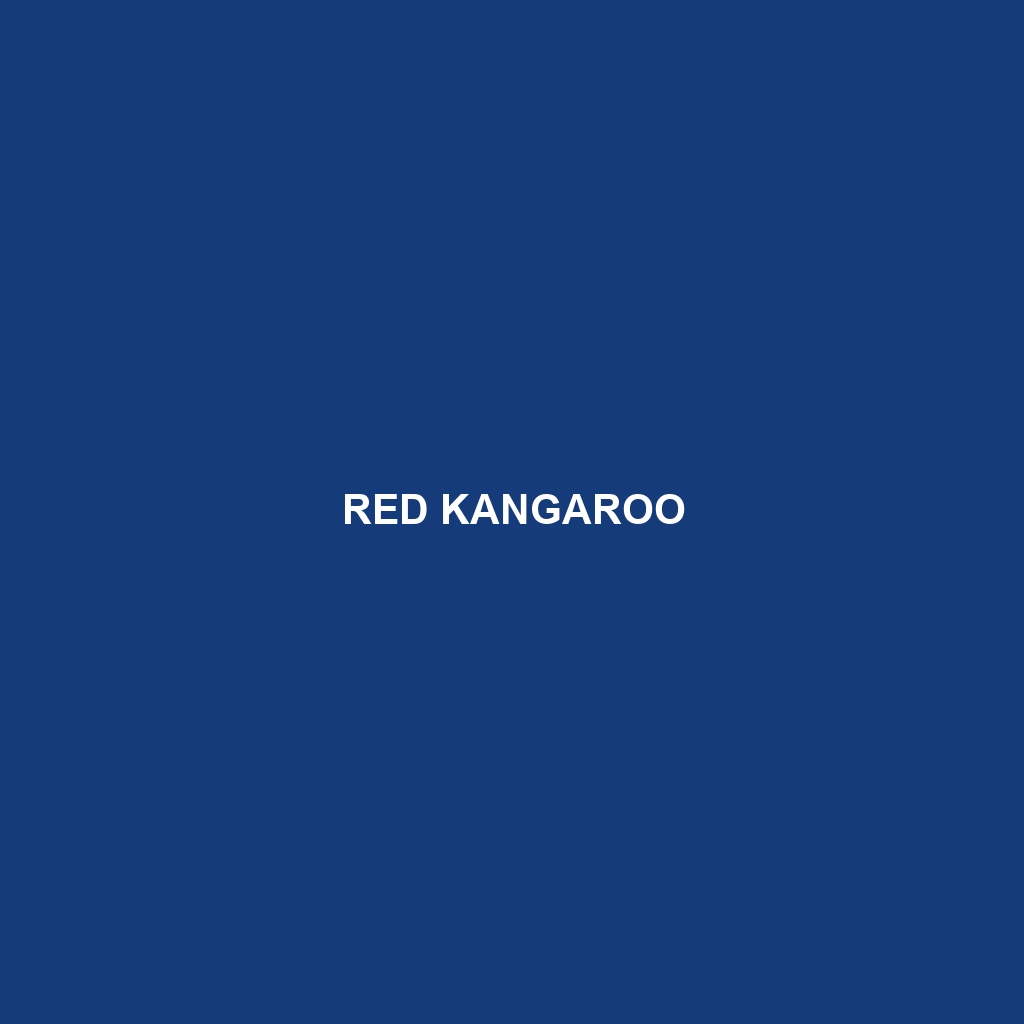Red Kangaroo (Macropus rufus)
The Red Kangaroo (Macropus rufus) is the largest marsupial in the world, renowned for its powerful hind legs, distinctive hopping gait, and iconic presence in the Australian outback. Known for their reddish-brown fur and impressive agility, these marsupials are a quintessential symbol of Australia’s unique wildlife.
Physical Characteristics
Size: Male Red Kangaroos can stand up to 1.8 meters (6 feet) tall and weigh around 85 kilograms (187 pounds). Females are generally smaller, reaching up to 1.1 meters (3.6 feet) in height and weighing around 35 kilograms (77 pounds).
Coloration: Males typically possess a rich, reddish-brown coat, while females are more likely to be bluish-gray. Both sexes have a lighter-colored underbelly.
Special Features: Red Kangaroos have large, muscular hind legs adapted for powerful, long-distance hopping and a long, sturdy tail used for balance. Their forelimbs are much smaller and are used for grooming and feeding. Their large, elongated ears provide excellent hearing, and their keen eyesight helps them detect predators from a distance.
Behaviors
Social Interactions: Red Kangaroos are social animals, often found in groups called “mobs,” which can range from a few individuals to over a hundred. These mobs are typically led by a dominant male, known as the “boomer.”
Feeding Habits: They are herbivorous and primarily graze on grasses and forbs. Red Kangaroos are well-adapted to arid environments and can go for long periods without water, obtaining most of their hydration from the plants they consume.
Ecological Roles: As significant grazers, Red Kangaroos play a crucial role in maintaining the balance of their ecosystems. Their grazing helps control plant growth and their movements aid in seed dispersion.
Habitat
Red Kangaroos inhabit a variety of environments across Australia, including savannas, grasslands, scrublands, and desert regions. They prefer open plains but can also be found in wooded areas provided there is ample space for movement and feeding.
Adaptations
Locomotion: Their powerful hind legs and large feet allow them to cover large distances quickly and efficiently, reaching speeds of up to 56 km/h (35 mph).
Thermoregulation: To cope with the extreme temperatures of their habitat, Red Kangaroos lick their forearms, where their blood vessels are close to the surface, allowing them to cool down by evaporative cooling.
Water Conservation: Their efficient kidneys enable them to live with minimal water intake, excreting highly concentrated urine to conserve water.
Conservation Status
The Red Kangaroo is currently classified as “Least Concern” by the International Union for Conservation of Nature (IUCN). Their populations are stable and widespread, thanks in part to their adaptability to varied environments and the vast protected areas within Australia.
Fun Facts
Hopping Efficiency: The unique hopping motion of Red Kangaroos is not only fast but also energy-efficient. They use elastic tendons to store and release energy with each bounce.
Joey Development: Female Red Kangaroos have a remarkable reproductive system that allows them to pause the development of a fetus until environmental conditions are favorable, a phenomenon known as embryonic diapause.
Long Lifespan: In the wild, Red Kangaroos can live up to 22 years, with males generally having shorter lifespans than females due to intense competition and fighting.
The Red Kangaroo is a fascinating and iconic creature, embodying the spirit of the Australian wilderness with its unique adaptations and resilient nature. Whether hopping across the plains or resting in the shade, these marsupials continue to captivate and inspire admiration worldwide.
